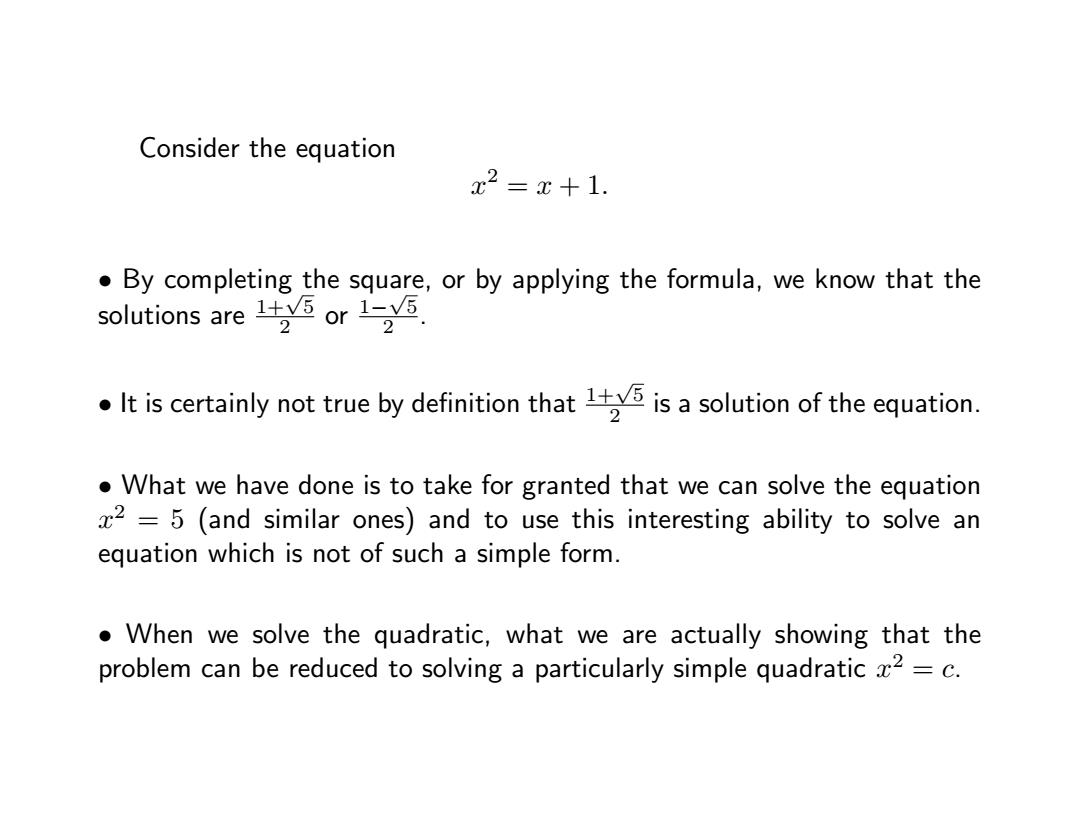
Consider the equation x2=x+1. By completing the square,or by applying the formula,we know that the solutions are 15 or 15 2 2 It is certainly not true by definition that5 is a solution of the equation. 2 What we have done is to take for granted that we can solve the equation z2=5 (and similar ones)and to use this interesting ability to solve an equation which is not of such a simple form. When we solve the quadratic,what we are actually showing that the problem can be reduced to solving a particularly simple quadratic 2=c
Consider the equation x 2 = x + 1. • By completing the square, or by applying the formula, we know that the solutions are 1+√ 5 2 or 1− √ 5 2 . • It is certainly not true by definition that 1+√ 5 2 is a solution of the equation. • What we have done is to take for granted that we can solve the equation x 2 = 5 (and similar ones) and to use this interesting ability to solve an equation which is not of such a simple form. • When we solve the quadratic, what we are actually showing that the problem can be reduced to solving a particularly simple quadratic x 2 = c
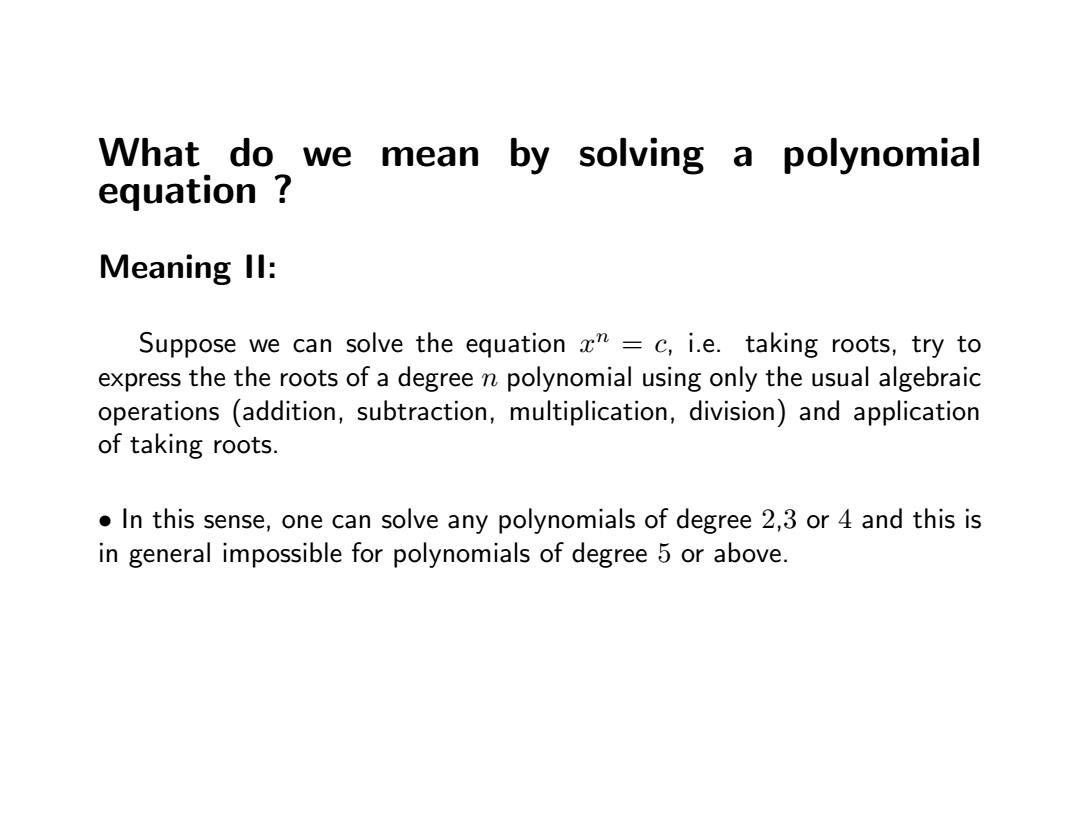
What do we i mean by solving a polynomial equation Meaning Il: Suppose we can solve the equation xT=c,i.e.taking roots,try to express the the roots of a degree n polynomial using only the usual algebraic operations (addition,subtraction,multiplication,division)and application of taking roots. In this sense,one can solve any polynomials of degree 2,3 or 4 and this is in general impossible for polynomials of degree 5 or above
What do we mean by solving a polynomial equation ? Meaning II: Suppose we can solve the equation x n = c, i.e. taking roots, try to express the the roots of a degree n polynomial using only the usual algebraic operations (addition, subtraction, multiplication, division) and application of taking roots. • In this sense, one can solve any polynomials of degree 2,3 or 4 and this is in general impossible for polynomials of degree 5 or above
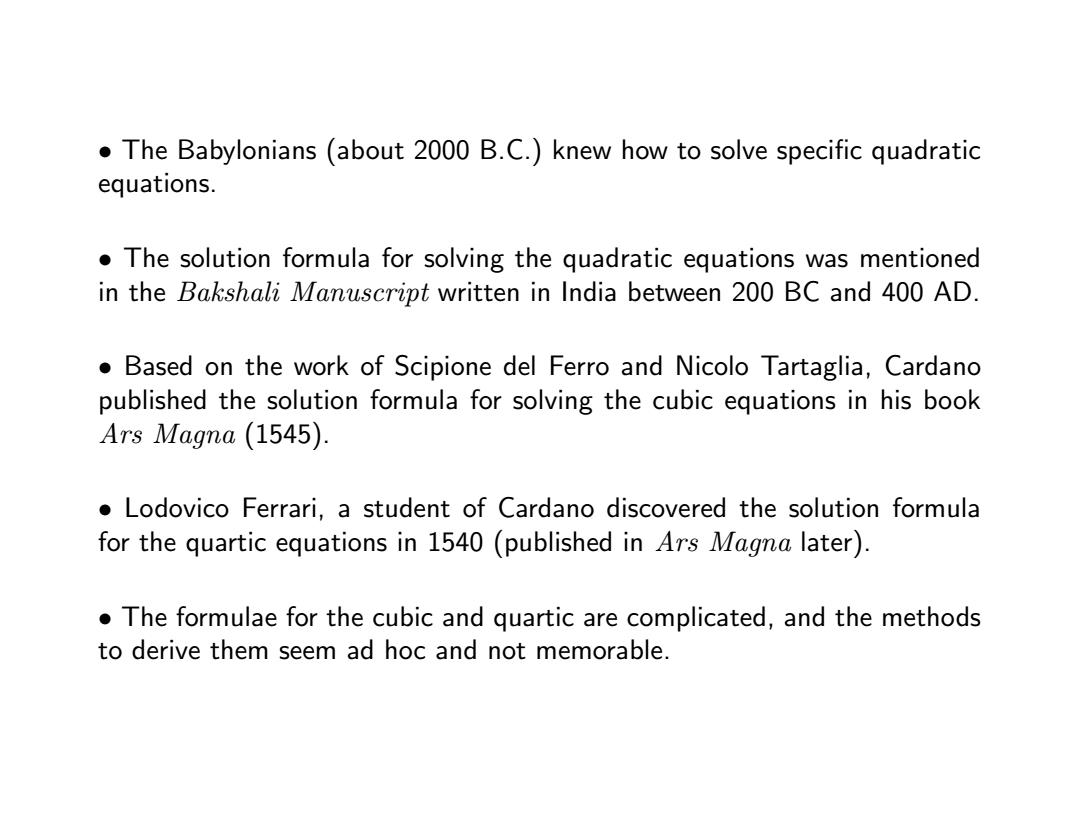
The Babylonians (about 2000 B.C.)knew how to solve specific quadratic equations. The solution formula for solving the quadratic equations was mentioned in the Bakshali Manuscript written in India between 200 BC and 400 AD. Based on the work of Scipione del Ferro and Nicolo Tartaglia,Cardano published the solution formula for solving the cubic equations in his book Ars Magna (1545). Lodovico Ferrari,a student of Cardano discovered the solution formula for the quartic equations in 1540 (published in Ars Magna later). The formulae for the cubic and quartic are complicated,and the methods to derive them seem ad hoc and not memorable
• The Babylonians (about 2000 B.C.) knew how to solve specific quadratic equations. • The solution formula for solving the quadratic equations was mentioned in the Bakshali Manuscript written in India between 200 BC and 400 AD. • Based on the work of Scipione del Ferro and Nicolo Tartaglia, Cardano published the solution formula for solving the cubic equations in his book Ars Magna (1545). • Lodovico Ferrari, a student of Cardano discovered the solution formula for the quartic equations in 1540 (published in Ars Magna later). • The formulae for the cubic and quartic are complicated, and the methods to derive them seem ad hoc and not memorable
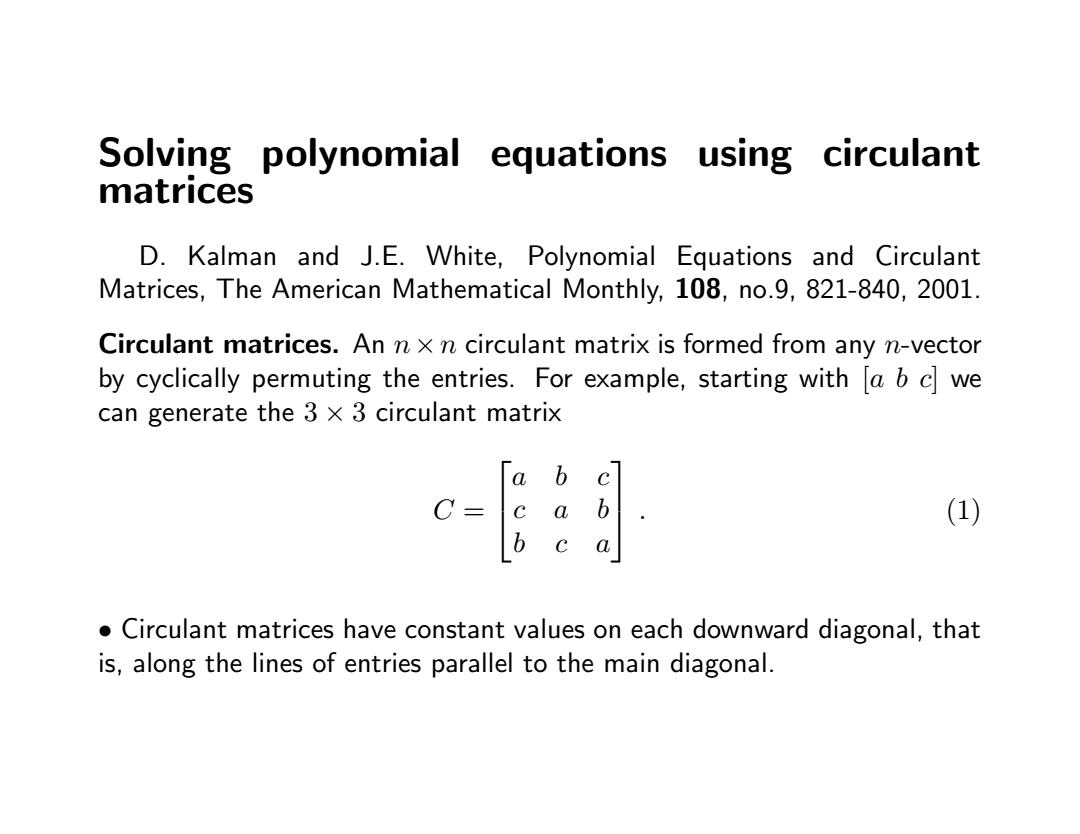
Solving polynomial equations using circulant matrices D.Kalman and J.E.White,Polynomial Equations and Circulant Matrices,The American Mathematical Monthly,108,no.9,821-840,2001. Circulant matrices.An n x n circulant matrix is formed from any n-vector by cyclically permuting the entries.For example,starting with a b c we can generate the 3 x 3 circulant matrix (a b C= a b (1) 0 Circulant matrices have constant values on each downward diagonal,that is,along the lines of entries parallel to the main diagonal
Solving polynomial equations using circulant matrices D. Kalman and J.E. White, Polynomial Equations and Circulant Matrices, The American Mathematical Monthly, 108, no.9, 821-840, 2001. Circulant matrices. An n×n circulant matrix is formed from any n-vector by cyclically permuting the entries. For example, starting with [a b c] we can generate the 3 × 3 circulant matrix C = a b c c a b b c a . (1) • Circulant matrices have constant values on each downward diagonal, that is, along the lines of entries parallel to the main diagonal
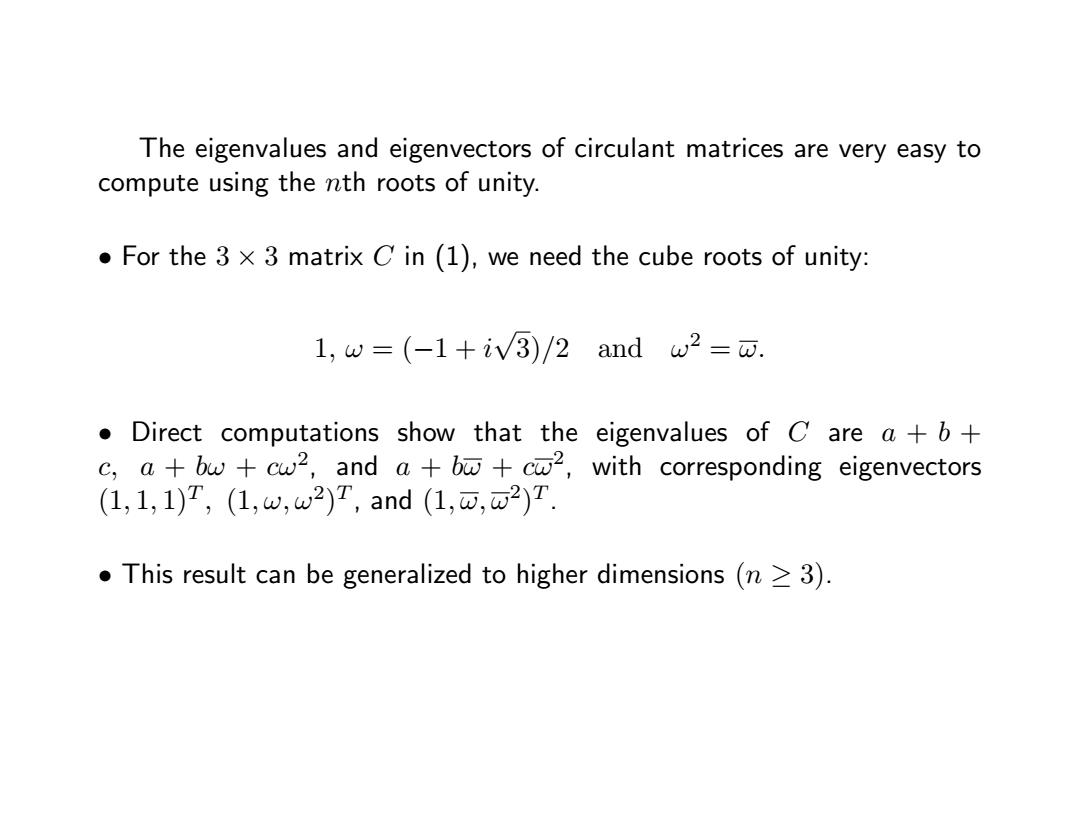
The eigenvalues and eigenvectors of circulant matrices are very easy to compute using the nth roots of unity. For the 3 x 3 matrix C in (1),we need the cube roots of unity: 1,w=(-1+iv3)/2andw2=o. Direct computations show that the eigenvalues of C are a+b+ c,a+bw +cw2,and a+bw+cw2,with corresponding eigenvectors (1,1,1)T,(1,w,w2)T,and(1,⑦,2)T. This result can be generalized to higher dimensions (n>3)
The eigenvalues and eigenvectors of circulant matrices are very easy to compute using the nth roots of unity. • For the 3 × 3 matrix C in (1), we need the cube roots of unity: 1, ω = (−1 + i √ 3)/2 and ω 2 = ω. • Direct computations show that the eigenvalues of C are a + b + c, a + bω + cω2 , and a + bω + cω 2 , with corresponding eigenvectors (1, 1, 1)T , (1, ω, ω2 ) T , and (1, ω, ω 2 ) T . • This result can be generalized to higher dimensions (n ≥ 3)